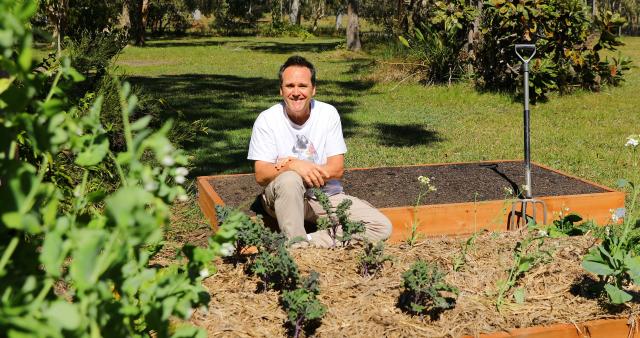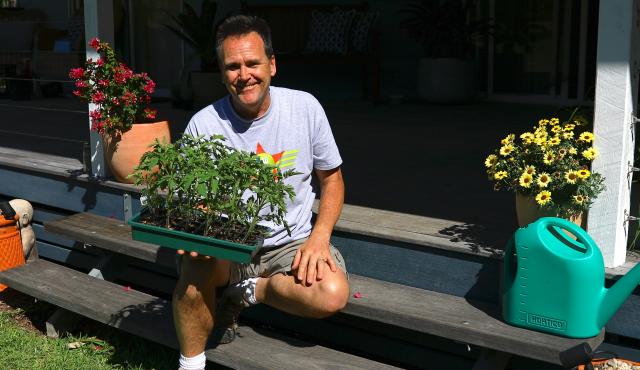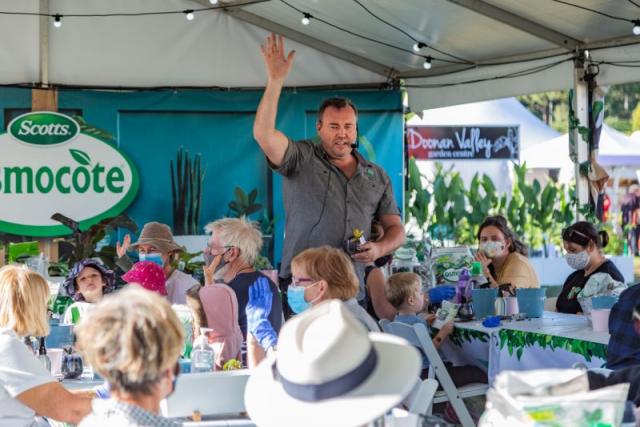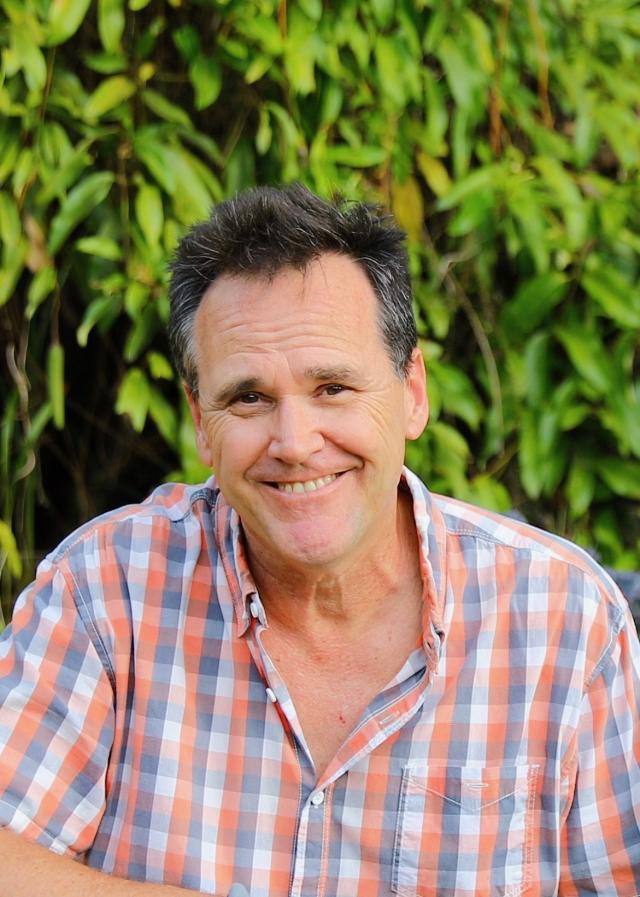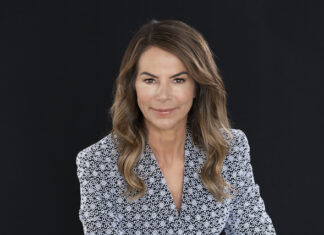If you want a successful vegetable garden, you have to dedicate time to it.
It doesn’t have to be a massive commitment – just 10-15 minutes a day for the average garden patch.
A little often saves having to do a lot later.
With a lifetime passion for plants and the garden coupled with more than 25-years of industry experience, Adam Woodhams is a dirt-under-the-nails gardener, horticulturist and sustainability specialist who crosses over into landscape and DIY.
Initially from Sydney, Adam now lives on the shores of Lake Weyba, near Noosa.
He is also a regular guest speaker at the Queensland Garden Expo, to be held at Nambour Showgrounds on July 8-10.
Adam believes gardening also creates a healthy outlook – it decreases stress and keeps you active.
“It’s fantastic exercise … and it’s free,’’ he said.
“Simply take the time to check for water, for bugs, and fungus after wet or humid weather.
“It’s quite easy and fun, but you need to understand that it takes time.
“It’s by no means difficult.’’
Gardening can be a pleasant way to start day – that quiet time just as the sun comes up.
Otherwise, it’s great to be able to wind down at the end – just before sunset, when the garden is so tranquil.
“Take the time to check the leaves, the soil, the mulch or the weeds,’’ Adam said.
“You have to understand those few minutes are an essential part of making it work.’’
Adam has been involved with the Queensland Garden Expo Expo for five years or so and will be there this year on two levels.
There will be more than 120 free talks and workshops at the expo during the weekend.
Adam will be at the Scotts marquee each day to run workshops.
They are probably the singular most popular workshops with instruction to build little planters.
He loves to be involved with the expo on a number of levels.
“I get to see what people are interested in – sharing a love of gardens, having the ability to chat one-on-one and face-to-face.
“So often that is done at a distance. Here, you can can talk directly.’’
This year it will be potted succulents – the chance to create a little treasure to take home and grow.
Adam will also do talks on the Jacaranda stage, focusing on two different areas.
One will be how to get the best photos and videos out of a phone camera.
For more than a decade Adam has operated his own specialised communications business.
His freelance editorial and photographic work has appeared in quality magazines such as Handyman Australia, Better Homes & Gardens, Gardening Australia and Your Garden to name a few.
Adam has photographed garden shows around the world including The Chelsea Flower Show.
He has worked as the principal photographer for the prestigious Melbourne International Flower and Garden Show.
The other topic he will speak about at the Queensland Garden Expo is sustainability.
Again, he has a strong background in that.
He believes that a home’s garden and living spaces can, and should, be beautiful, practical and environmentally sound.
Adam has been deeply passionate about contemporary sustainable home and garden design, long before it became a buzz-word.
“I approach it from a pragmatic point of view,’’ he said.
“If you do not take that approach it is not sustainable.
“It’s about how we can get sustainable in a way that does not bust the budget.
“To do that we reflect back on generations of past.’’
Sustainability is particularly timely now, as we come out of the Covid pandemic and are hit by cost of living increases.
“What destroyed sustainability was the end of World War 2,’’ Adam said.
“We had the manufacturers at the end of the war and all of this new technology.
“We went from simply meeting needs to creating advances in technology – refrigeration, supermarkets, improved transport.
“Broad-acre farming took over from family farms.
“It’s interesting in that it is now going full circle – it’s a fascinating area, particularly when you look at the history of it.
“People are quite surprised that it has only taken two or three generations to become so far removed from self-sustaining practices.’’
The challenges of the recent years have been blessings in many ways.
Adam comments on how great it is to see how the IGA food stores and independent outlets support local produce.
“When things hit crisis point in Covid and the floods, the big supermarkets could not provide so many lines.
“That’s where the local supermarkets and shopkeepers stepped up.
Local farmers were able to continue supplying these established retailers, and they were able to provide for customers.’’
Speaking of growing conditions, Adam admits he has a non-scientific rain gauge but that until the start of June there has been 2000mm of rain at Lake Weyba, when it is normally 1600mm annually.
Having moved to the Sunshine Coast six years ago, he is amazed at how the plants grown down south as indoor or rare ornamentals are standard for gardens here.
“It’s a great delight to grow giant bromeliads in an open garden.
“As a horticulturist, it was so exciting to be surrounded by different plants.
“What struck me was the length of the growing season. The warmth.
“We can keep growing tomatoes through winter.’’
He is inspired by the way we can get multiple crops throughout the year in South East Queensland, and many of them outside of regular growing times.
“Brassicas such as broccoli, cauliflower and cabbage do not like high temperatures during the day.
“That’s challenging in our winters as we get mild, sunny days.
“Having gardened since a kid, I noticed a lot of these vegetables were getting harder to grow in Sydney as well … we were experiencing warmer winter days even though there were still cold nights.
“It’s the same with broad beans and brussel sprouts … you need to be aware of requirements.
“Get a full understanding of what is needed.’’
That takes us back to getting out in the garden often, not letting challenges take over.
There are ways of getting around fruit fly, Adam said.
“The trick for citrus is an organic fly trap, and you put them in the garden as soon as you see the citrus trees starting to flower.
“That’s when the fruit is most susceptible – the skin is so thin.
“Keep the traps out until the skin thickens up.
“That’s one of the areas I talk about at the expo.
“It’s important to be in the crop regularly, so if there are any issues you can nip it in the bud.’’
For more details, go to qldgardenexpo.com.au/

